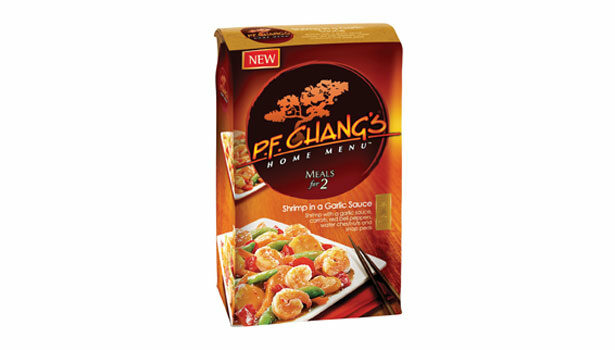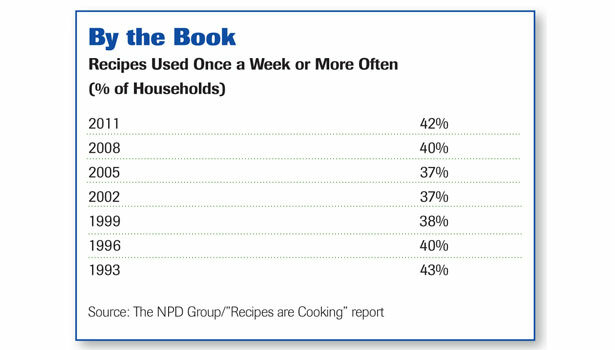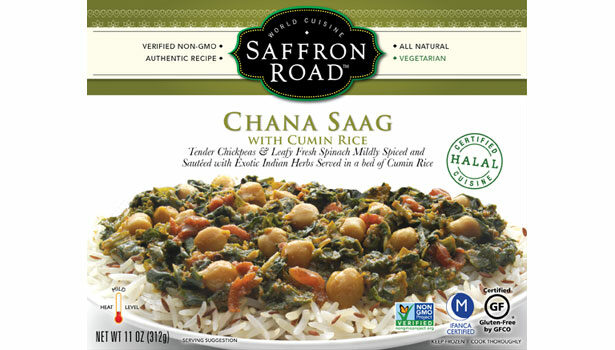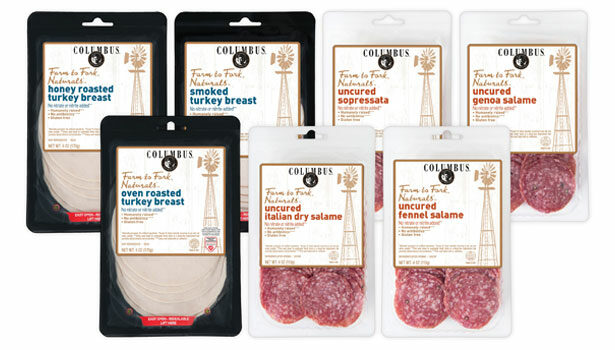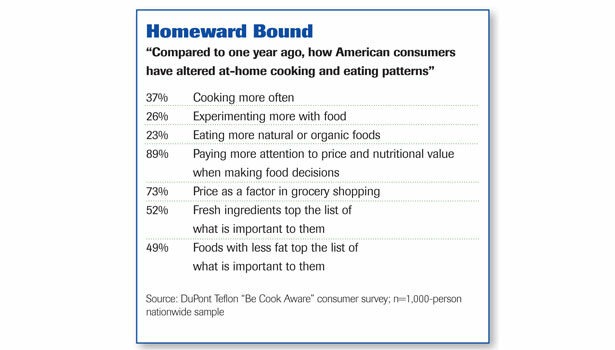In the area of convenience meals and processed meats, health and nutrition proved a solid selling point in 2012, as developers refined formulations and consumers turned to in-home dining in the midst of a challenging economy. At the same time, research continued efforts to make the average diet healthier without sacrificing any flavor.
Oregon State University (OSU) researchers began studies to drastically reduce the fat content of fried seafood and, if their efforts prove successful, it may prove a boon to the nutritional makeup of fried foods in general. Their research centers around the use of a fish protein found in surimi, refined fish proteins that can be made from a variety of species. Surimi is popular in fried Asian dishes with a very low fat content (roughly 2%), which prompted the research into its fat-blocking potential.
“After doing some initial tests with typical fried U.S. products, like chicken nuggets and French fries, we saw that the fried surimi product was consistently low in fat,” said Dr. Jae Park, professor at OSU’s Department of Food Science and Technology. “We thought if it’s the fish protein that is minimizing the fat uptake, how can we use that on other fried seafood to get the same results?”
After two years of research, Park and his team developed a fat-blocker solution from surimi protein that has successfully reduced the fat content of fried shrimp. They say the treated shrimp had 15-20% less fat, compared to untreated shrimp, without altering the taste or texture of the product.
Park noted, “At a time when Americans need to eat more seafood and choose healthier fried seafood options, this could be an easier way for them to improve their diets, while still allowing people to eat some of their favorites.”
There was more positive seafood nutrition news last fall from Cambridge University. Researchers there concluded eating fish at least twice a week could help reduce the risk of stroke; however, taking fish oil supplements did not provide that same assistance. The review analyzed data from 38 studies involving nearly 800,000 participants in Europe, North America and Asia-Pacific.
“This review found that higher fish consumption is moderately but significantly associated with a reduced risk of incident cerebrovascular disease,” the study’s authors concluded in a recent issue of the British Medical Journal.
Club Med
The positive health news surrounding seafood came at the perfect time for Freskot USA, whose premium-quality, Mediterranean-inspired, heat-and-serve frozen seafood meals, seafood burgers and sausages launched this year.
Freskot’s line includes such Mediterranean-inspired items as Seafood Risotto, Farfalle with Smoked Salmon, Calamari Croquettes, Pollock fillets in Beer Batter and Penne with Shrimp. It also includes authentic regional fare: Octopus with Onions (stifado), Macaroni with Octopus, Octopus Croquets and Cuttlefish with Spinach. New seafood
burgers and sausages, however, harbor no such Mediterranean origins but are intended as healthier alternatives to the traditional American barbecue items. Both the burgers and sausages promise “an experience comparable to traditional meat products in every way, except in the levels of fat and cholesterol,” per the company.
Meat without meat also was the route of choice for Veggie Patch, in its launch of Mediterranean Patties. Made with a blend of spinach, chickpeas and rich Mediterranean spices, the patties boast 5g of protein, 5g of fiber and 120 calories per patty, while containing no GMO ingredients, trans fat, cholesterol, artificial preservatives or monosodium glutamate.
Such concerns were by no means limited to seafood offerings this year, either. Columbus Foods launched Farm to Fork Naturals, a line of seven new products, all minimally processed with no added nitrites or nitrates, and made from hogs and turkeys humanely raised on family farms. The line launched with three deli meat and four salame varieties.
Columbus Foods’ new deli meats include Oven-Roasted Turkey Breast, Honey-Roasted Turkey Breast and Smoked Turkey Breast. New salame offerings include an Uncured Fennel variety (prepared with fennel seeds, sea salt and garlic); Uncured Genoa Salama (a blend of cracked pepper and garlic); Uncured Italian dry variety (with a complement of spices and full-bodied wine); and Uncured Sopressata (mixing sweet fennel, peppers and red wine).
Manufacturers also sought to address consumer concerns about sodium and fat content in processed meats. John Morrell Food Group, a Smithfield Foods subsidiary, introduced Armour and John Morrell 40% Lower Sodium Franks for foodservice, utilizing what officials call a “breakthrough all-natural sodium alternative that allowed for a one-to-one replacement of salt.” Elsewhere, Jennie-O Turkey Store added Jennie-O Turkey Bacon with 60% less sodium and 60% less fat than conventional pork bacon. Per serving, the turkey bacon has 130mg of sodium and no trans fats, artificial sweeteners or gluten.
Gluten was a popular allergen to avoid in last year’s product introductions. Rossi Pasta, for example, added three new gluten-free gourmet pastas: GlutenFree Classic Radiatore, GlutenFree Tomato Basil Radiatore and GlutenFree Spinach Basil Radiatore. Another processor, Piller’s Fine Foods, introduced Piller’s Simply Free, a line of deli meats made with natural ingredients, and free of gluten and all other major food allergens. The range includes sliced meats, wieners, meat snacks, sausage, ham and smoked breakfast ham.
Selling the Point
In SymphonyIRI Group’s “2011 New Product Pacesetters” report (released last March), the list of top first-year sales performers had at least three convenient meals or meats. They were: Lean Cuisine Market Creations (entrées for consumers managing their weight, finishing eighth with $48.6 million); Oscar Mayer Selects (specially selected cuts of meat with no artificial preservatives, finishing third with $69.2 million); and P.F. Chang’s Home Menu (a frozen entrée line inspired by the restaurant chain’s signature dishes, which topped the New Product Pacesetters with $101.6 million in year-one sales).
The P.F. Chang’s line proved so successful that officials expanded into appetizers last year. Those new entries were General Chang’s Chicken Spring Rolls, paired with a sweet-and-sour sauce; Teriyaki Chicken Spring Rolls with red pepper and onion in the classic roll; Shrimp and Seafood Dumplings; Chicken and Vegetable Dumplings (with chicken, bok choy, shiitake mushrooms and soy sauce); and Pork and Leek Dumplings.
“The ritual of home-based eating has really driven the need for products that offer quick and easy meal solutions and provide the variety, comfort and/or restaurant quality that consumers need at solid value,” said SymphonyIRI.
“In fact, according to SymphonyIRI’s ‘Q1 2012 MarketPulse’ survey, 55% of consumers are eating out less frequently today vs. before the downturn began. This opportunity has been addressed and capitalized on by today’s most savvy manufacturers, evidenced by the fact that successful dinner solution launches became more numerous vs. historical averages in 2011.”
Whether it’s due to the continued economic challenges or a desire for an at-home dining experience, U.S. families are more likely to eat meals at home, finds The NPD Group. As a result, these researchers suggest there’s a growing use of recipes. In fact, the use of a recipe once a week or more increased to 42% in 2011, from 37% of Americans doing so in 2005. That 2011 statistic was the largest in nearly two decades, since 1993’s 43% tally.
In 2011, two thirds of all homemakers (67%) reported they had used a recipe within the past 30 days; 42% were using recipes even more often. Within the past week, nearly 38 million U.S. households will have used a recipe while preparing dinner; on any typical evening, 11 million households will use a recipe to prepare dinner.
“Cost-conscious American families are eating meals at home more, which means household cooks are in greater need of meal ideas,” explains Darren Seifer, NPD food and beverage industry analyst. “Recipes provide the ideas for convenient and good-tasting meals and enable households to stretch food dollars by providing new and creative ways to use ingredients already available at home.”
Who’s leading the recipe revolution? The NPD Group report “Recipes are Cooking,” attributes recipe growth primarily to young adults, i.e., Millennials. Nearly half of that generation, almost 30 million young adults, now use recipes at least once a week. Generation X is not far behind; 45% of that group (some 25 million consumers) say they use recipes at least once a week.
“As in-home meal consumption continues to grow, the home cooks’ need for new and interesting meal ideas is going to continue to grow, as well,” explains Seifer. “Food manufacturers can take advantage of the advanced planning involved in recipe dishes. If you can promote the right recipe in front of these cooks, you are very likely to get on their shopping list.”
Man Made
A University of Michigan report echoes The NPD Group’s findings, but also found men of Generation X to be “surprisingly involved in shopping for food and cooking.” These men shop for groceries more than once a week, on average, and cook an average of about eight meals a week—significantly more often than their fathers did.
“I was surprised to see how often GenX men shop and cook,” said Jon Miller, author of “The Generation X Report” that details the role food plays in the lives of Americans born between 1961-1981.
“Women, particularly married women, are still doing more cooking and shopping, but men are much more involved in these activities than they used to be. The stereotype that men can’t do much more in the kitchen than boil water just can’t hold water, as it were,” Miller says.
The report found Generation X-ers cooked a meal for guests about once a month and talked to friends about food or cooking about six times every month. Married women prepared approximately a dozen meals a week, while single women prepared 10 meals weekly. Men, whether married or single, prepared eight meals weekly. Roughly 50% of the group said they prefer to buy organic foods at least some of the time, and 10% indicated they were “committed to buying organic when it was available.” On the subject of genetically modified (GM) foods, however, the group was a bit in the dark and, according to the report, had a low level of understanding of the topic. (The mean score was 3.8 on a 10-point index of understanding.)
Such news may not bode well for a new meal from American Halal Co., though the product has far more than one marketing angle working in its favor. The company notes its Chana Saag with Cumin Rice entrée is the first of its kind, a non-GMO-verified frozen entrée.
Nevertheless, that non-GMO status is far from the product’s sole selling point. In fact, as American consumers embrace new cuisines and ethnic foods, manufacturers are meeting those demands with convenient options. American Halal Co.’s gourmet Chana Saag with Cumin Rice—added under its Saffron Road brand at the end of January—also is all-natural, gluten-free, vegetarian and certified-halal. It joined Saffron Road’s 12 World Cuisine frozen entrée line, which includes four Indian varieties. The new Chana Saag option includes organic chickpeas, leafy fresh spinach, mildly spiced and sautéed with herbs, including garlic, cumin seeds and fresh ginger, served on a bed of cumin rice.
“We were motivated to add another ethnic frozen entrée to our portfolio, as consumers continue to ask for more vegetarian and non-GMO options,” said Jack Acree, executive vice president of sales of marketing with American Halal Co. “We continue to look for more gaps to fill in the marketplace.”
Other convenience meal manufacturers have embraced the organic symbol as a point of differentiation and, indeed, as a necessity to compete in certain markets. This year already found Polska Foods’ Pierogi introducing new product labels for its products on Whole Foods stores and select grocery stores on the West Coast. The new labels indicate organic certification from Oregon Tilth, a variety of cooking methods for its pierogi and additional health information.
“Even though Prop 37 did not pass here in California, we know that consumers still want to know what they are eating and what is in their food,” said Tomek Piszczek, founder and product designer at Polska Foods.
“We took extra steps to make sure our products use organic ingredients, no preservatives, no GMOs, no trans fats, no MSG, and no artificial flavors or ingredients. Our new labels now accurately reflect the true health of our products, plus point out the grams of fiber and whole grains naturally found in each flavor of our pierogi. We feel this transparency will help consumers, especially parents,” avers Piszczek.
Annie’s new family-sized Rising Crust Frozen Pizza also features organic ingredients and continues the company’s expansion into the frozen aisle. With three flavors (Uncured Pepperoni, Four Cheese and BBQ Recipe Chicken), the pizza is the first rising-crust pizza made with organic ingredients and natural meat toppings, says Annie’s. All three 11.5in varieties are made with organic flour, organic tomatoes, whole grains and 100% real, rBST-free cheese.
Looking to the future, manufacturers would be well advised to establish themselves in consumers’ kitchens while they can. Technomic research indicates the Millennial generation expects to increase its foodservice spending in the next year. Some 50% of Millennnials surveyed said they expect their personal financial situation to improve in the coming year, while only 21% of all consumers believe their finances will worsen in that time.
